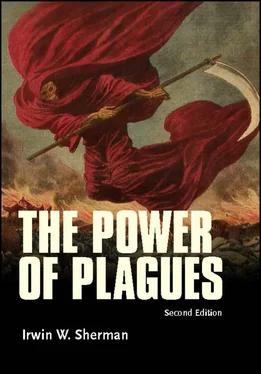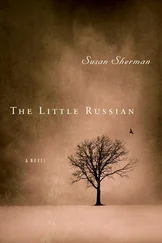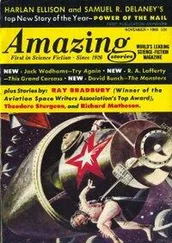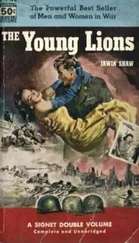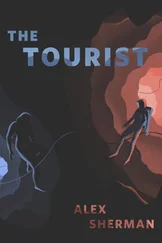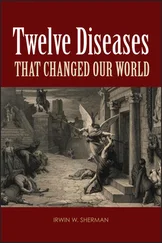Figure 2.3c Acheulean tools used by Homo erectus , Courtesy Didier Descouens

Figure 2.3dDiorama of H. ergaster the “African equivalent” to fossils of H. erectus . Alamy Stock Photo.
Roughly 1.6 million years ago (or ~1.8 million years ago in Africa), H. habilis was replaced by H. erectus (meaning “erect man”) ( Fig. 2.3d). (In Africa, H. erectus is equivalent to fossils that have been named H. ergaster.) H. erectus was close to modern humans in body size, and its skull capacity suggests that it was somewhat larger-brained than H. habilis —but still with barely half the capacity of modern humans. H. erectus had smaller cheek teeth, suggesting that they were omnivores; they were smaller-faced; they developed a culture characterized by living in caves; and they hunted game animals using bifaced flake stone tools fashioned into “hand axes.” This stone tool technology (called Acheulean tools) ( Fig. 2.3c) allowed H. erectus to process more completely the harder parts of animals and plants by grinding, crushing, splitting, and cutting up these before eating. As such, these stone tools represented a technological advance and served as extensions of the hands and teeth to break down food before digestion. H. erectus was able to start fires and made use of fire to cook the food. The H. erectus population was now somewhat less than a million. According to the “long journey” hypothesis, about 2 million years ago the H. erectus populations began to move out of Africa via the Middle East, but climate and geography prevented them from turning west, and so they took a more southerly route into present-day China and Indonesia. Then they turned north and moved west again across the more central parts of Europe and Asia. The earliest fossil remains of H. erectus were found in Indonesia (Java) by Eugene Dubois in 1891 and so were named Java Man; 2 decades later, when Davidson Black found similar fossils in caves in China, they became known as Peking Man. The cave sites in China are ~500,000 years old, and the last of these were abandoned ~230,000 years ago.
When the populations of H. erectus left Africa, some of their parasites went with them, but only those that could be transmitted directly from person to person. Those vectors that remained restricted to Africa, such as the species of mosquito, snail, and fly that transmit diseases such as filariasis, blood fluke disease, and sleeping sickness, respectively, did not follow the migratory path. Indeed, even today they remain diseases that are characteristic of Africa. But as H. erectus encountered new environments with new kinds of animals, they were subjected to sources of new parasites; with an increase in the number of humans living in more-restricted geographic environments, the probability for large-scale infections was enhanced.
Tool making and tool use, as well as human cooperation, made hunting possible. Together they contributed to further increases in the size of the human population, and over time H. erectus evolved into humans closely resembling us. A half-million years ago the human populations of Africa and those in Europe and Asia began to diverge from one another. Some 200,000 years ago the fossil record shows individuals who were larger-brained; those with a more graceful face, found in southwestern Europe and dated to 40,000 years ago, were called Cro-Magnon man. In a fit of hubris, Carolus Linnaeus gave them the scientific name Homo sapiens , literally “wise man.” H. sapiens not only used the stone technology of H. erectus but also made tools from bone and antlers. They made artistic carvings and cave paintings, kept records on bone and stone, played music on simple wind instruments, adorned themselves with jewelry, and buried their dead in ritual ceremonies; their living sites were highly organized and stratified, and they hunted and fished in groups. The intermittent technological advances in tool making seen with H. habilis and H. erectus were constantly refined. Clearly, they were our immediate ancestors. At this time the human population numbered about a million individuals.
In western Europe, human skeletons were found first in the Neander Valley of Germany in 1856; they were called Neanderthals. Subsequently, Neanderthal fossils were found in the Middle East and parts of western Asia. They date from between 190,000 and 29,000 years ago. Some archeologists have classified them as a separate species,
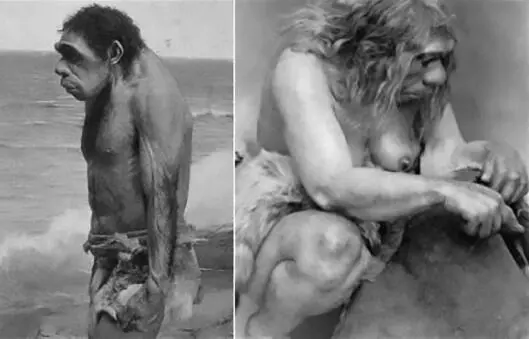
Figure 2.4aNeanderthal man in profile; Neanderthal woman cleaning a reindeer skin, (both) Wellcome Library, London (CC-BY 4.0)
Homo neanderthalensis . The Neanderthals, who previously have been depicted as brutish cavemen ( Fig. 2.4aand b), have been “modernized” on the basis of a brain size slightly greater than our own, and they left evidence showing that they cared for the sick and performed ritual burials ( Fig. 2.4c). Their stone tools, however, were cruder than those of Cro-Magnon man. Within a few thousand years the Cro-Magnons, with their superior weapons and other advanced cultural practices, had completely displaced the Neanderthals. In Africa there are skeletal remains that are more modern than those of Neanderthals, dating back 200,000 years. Thus, nearly a quarter of a million years ago, populations of H. sapiens lived in Africa, Asia, and Europe. Their migration into the Americas took place ~35,000 to 12,000 years ago when they crossed the land bridge at the Bering Strait from Asia into the Americas. Forty thousand years ago humans moved into Australia. Thus, over the past 5 million years, new hominid species have emerged, coexisted, competed, and colonized new environments, in some instances succeeding, in others becoming extinct. The fossil record is of necessity incomplete, and much will be learned from future anthropological digs, but what is certain is that we did not arrive by a straight-line descent from the apes; we are not the single topmost limb in the hominid evolutionary tree, but simply one of its many branches.

Figure 2.4bA 1953 B- grade movie poster representing a monster-like Neanderthal man. Courtesy of Popcorn Posters.
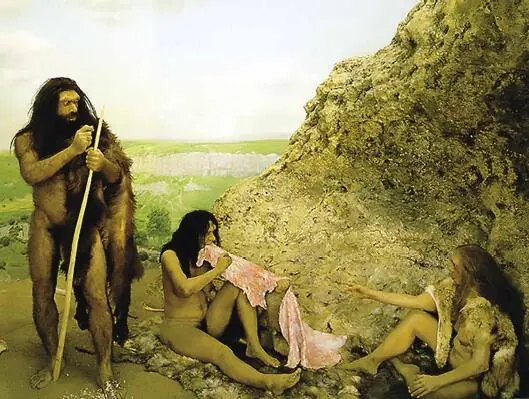
Figure 2.4cNeanderthal Family, Reconstruction. Ian Tattersall, American Museum of Natural History
Hunter-gatherers, unable to preserve and store fruits, vegetables, and meat, were forced to roam over large distances in search of wild edible plants and to hunt down game animals and find sources of drinking water. Moving from place to place, these nomadic bands were not surrounded by heaps of rotting meat or feces, and exposure to parasite-infested waters was limited. Though the hunter-gatherers did come together in groups, the size of their populations was small, and so diseases of crowds requiring human-to-human transmission were absent. Based on what we know about modern hunter-gatherer societies like those in present-day New Guinea, the Australian aborigines, and the Kalahari bushmen, we believe our hunter-gatherer ancestors were a relatively healthy lot. Gradually, however, conditions would change as the size of human populations increased and people adopted sedentary habits—living for extended periods of time in permanent or semipermanent settlements. This would, over time, dramatically increase the incidence of human disease.
Читать дальше
